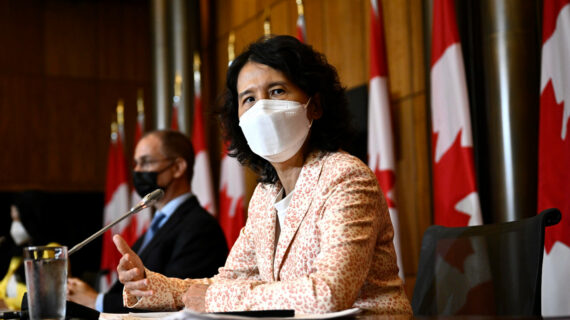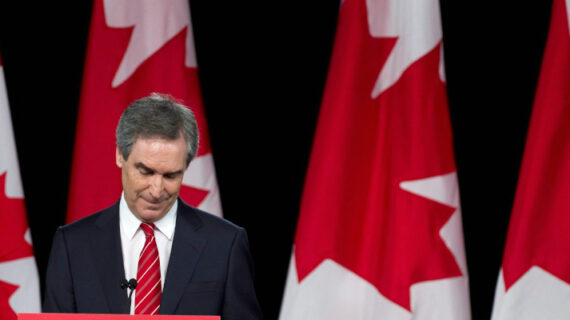The pursuit of autonomy and ever-increasing equity between the sexes has long stumbled on the apparent obstacle of children—particularly that the burden of bearing and rearing them falls unduly upon women. Increasing, then, the ways in which women can unshackle themselves from this responsibility has been a preoccupation of progressive policymakers for decades.
From this vantage point, the government funding of birth control for women in British Columbia appears to be a victory for self-determination. As B.C. Finance Minister Katrine Conroy noted, the new initiative will not only save money for those who access the provision, but it is also a gain for equity between the sexes, ensuring (within the limits of the technologies employed) that women can determine when and if they become pregnant. It appears to be winners all around.1Focused interventions in lowering fertility rates have a precedent in Canada, with teenage birth rates having fallen drastically in Canada and B.C.
And yet for all the reasons that many Canadians may celebrate this legislation, including its likely foreshadowing of comparable developments across the country, there are at least three features of the new funding worth pondering.
In the first instance, it is prudent to ask whether a $119 million investment over three years in an intervention that does not address a medical illness is the best use of health-care dollars at a time when the fragility of health care coast-to-coast is generating a constant, and increasingly apocalyptic, conversation. (And this is to say nothing about the remarkably counterintuitive plan of spending $40 million dollars annually to address what the finance minister herself describes as a $27 million issue.)
The Fraser Institute, for example, notes in a recent report that medical wait times in Canada more than doubled between 1993 and 2019. Even Jagmeet Singh declared a national crisis at the end of last year, alongside his earlier claims in 2022 that the current system is unsustainable for family medicine. B.C. itself is now having to fly some cancer patients to the U.S. for treatments it cannot provide.
More importantly, perhaps, we might also note that the government is investing significantly less in what is a significantly more persistent health-care cost for women: menstruation. The campaign to end period poverty in B.C. has only just begun. Its aim is to provide menstrual products to the economically precarious through collaboration with, among others, the United Way. That comparable partnerships for the targeted distribution of contraceptives were not the go-to model for a government interested in investing itself in the bedrooms of the province is peculiar.
Second, the minister’s celebration of funded contraceptives as a victory for gender equity looks a little like smiling through clenched teeth. Though the new coverage is expansive, it only includes hormonal or physical contraceptive interventions for women. If, as is obvious, the physical effects of carrying a child are borne by women, then surely demanding that women also bear sole responsibility for pregnancy prevention is hardly part and parcel of the years-long feminist fight.2Neither is the failure to distinguish between birth control and medical interventions to end pregnancy helpful. Whatever one’s thoughts about abortifacients, to speak as if they are a form of birth control is to engage in a willful obfuscation.
In the third instance, beneath the current celebration of publicly funded pills, there is a much deeper issue that makes this funding feel more like a concession to a particular view of women’s rights than a necessary development of provincial health coverage. Indeed, medical interventions intended to prevent the conception of children may in fact not be the support most urgently needed in B.C. (or, arguably, in any major urban centre across the country).
The strangeness of this government spending only increases when we recall that B.C. had the lowest birth rate in the country in 2022, at 1.17 children per woman. Though access to contraceptives is no doubt prohibitively expensive for some, this statistic does not suggest that they are all that hard to come by or that there is an epidemic of individuals unaware of the finer points of modern family planning.
There is a residual sense in our culture that women writ large are anxious for cheap and plentifully-available means to prevent or end unwanted pregnancies, and that policy programs must be tailored towards the goal of liberating women from these problems.
But does this reflect the reality of women’s desires?
Far from having too many children, a growing number of families in B.C. have indicated that the cost of living has made children an impossible dream. For these people, the use of contraception is not a victory. It is, rather, a determination made in the midst of B.C.’s daunting material demands on its residents.
Lyman Stone demonstrates persuasively that the fertility problem in Canada is not weighted on the side of women having too many children but, rather, appears to be just the opposite. Across the board, women are having fewer children than they wish. The reasons for this are complex, from delayed marriage and childbearing to the ubiquitous financial worries attendant on modern life in Canada’s largest cities. None of this necessarily means bracketing funding for contraception, of course, but it may suggest that if the government wants to invest itself in family planning, those most in need of support may be folks wanting kids, not those trying to avoid them.

Indeed, for the money as well as the culture conscious among us, there is in fact a significant cost associated with the kinds of barriers preventing people from having children, whether those barriers are financial or social. Ross Douthat notes, for example, that “social scientists have lately begun ‘discovering,’ [that] a low-birthrate society will enjoy lower economic growth; it will become less entrepreneurial, more resistant to innovation, with sclerosis in public and private institutions. It will even become more unequal, as great fortunes are divided between ever smaller sets of heirs.”
Since at least the 1970s, there has been a trend towards the “closing of the Canadian family” through the early and ongoing internalization of the family planning ethos widely championed after the pill became more readily accessible. Benjamin Schlesinger’s 1974 Family Planning in Canada: A Source Book, largely summarizes the new progressive maxims:
The importance of family planning has become increasingly evident to more Canadians during the past few years. To the individual family it can mean greater health and happiness and the ability to bring up children with love, dignity, and the capability of reaching their full potential. To a nation it may mean a stabilized and optimistic society. To the world it may mean survival. Today, many couples, for social, economic, or medical reasons, feel a need to limit the number of children they will have.
This utopian vision of “every child a wanted child,” its celebration of the scientific ordering of reproduction, and its moralizing tone, are now standard fare. We have largely assimilated the language of “unintended” pregnancies, for example, as if fertility were an incidental feature of human sexuality. And many of us subscribe to the idea that planned pregnancies produce happier kids, despite the record rates of child mental health disorders in a country with no shortage of family planning support. We are also largely blind to the technocratic interventions that undermine spontaneity or surprise in pregnancy. One might be inclined to worry that this blindness works a subtle magic, trans-valuing children from gifts into earned goods, and procreation from good fortune to hard work.3This, no doubt, is another story.
It may be that Canadians desire a culture where the government intervenes with endless provisions to facilitate endless lifestyle choices.4Though relentless government intervention is never value-neutral nor has one generation’s progressive politics always resulted in a net cultural good—eugenics, anyone? We may even feel that the forms of social hardship that will accompany smaller families due to the apparent financial impossibility of children (or a more fundamental disinterest in them) are a reasonable price to pay to secure other freedoms.
But however you slice it, $119 million dollars to prevent pregnancies in a province with the lowest birth rate in the country is not exactly an obvious story of money well spent. Though whether the money is spent or not, the future of Canada looks a lot lonelier these days.




